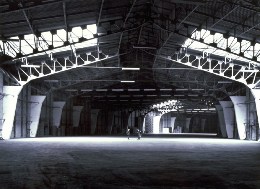| Rationale For A Science Museum | ||||||
| Frank Oppenheimer, Department of Physics, University of Colorado Reprinted from Curator: The Museum Journal, Volume 1 Issue 3, Pages 206-209 (September 1968) | ||||||
| There is an increasing need to develop public understanding of science and technology. The fruits of science and the products of technology continue to shape the nature of our society and to influence events which have a world-wide significance. Yet the gulf between the daily lives and experience of most people and the complexity of science and technology is widening. Remarkably few individuals are familiar with the details of the industrial processes involved in their food, their medicine, their entertainment or their clothing. The phenomena of basic science which have become the raw material of invention are not easily accessible by the direct and unaided observation of nature yet they are natural phenomena which have, for one segment of society, become as intriguing and as beautiful as a butterfly or a flower. There have been many attempts to bridge the gap between the experts and the laymen. The attempts have involved books, magazine articles, television programs and general science courses in schools. But such attempts, although valuable, are at a disadvantage because they lack props; they require apparatus which people can see and handle and which display phenomena which people can turn on and off and vary at will. Explaining science and technology without props can resemble an attempt to tell what it is like to swim without ever letting a person near the water. For many people science is incomprehensible and technology frightening. They perceive these as separate worlds that are harsh, fantastic and hostile to humanity. There is thus a growing need for an environment in which people can become familiar with the details of science and technology and begin to gain some understanding by controlling and watching the |  | |||||
The cavernous Palace of Fine arts building before the Exploratorium moved in. | ||||||
| behavior of laboratory apparatus and machinery; such a place can arouse their latent curiosity and can provide at least partial answers. The laboratory atmosphere of such an "exploratorium" could then be supplemented with historical displays showing the development of both science and technology and its roots in the past. The purpose of a science museum and exploration center would be to satisfy this need. It could be valuable and entertaining for the general public and would serve as a resource for schools and existing adult education programs. The demonstrations and exhibits of the museum should have an aesthetic appeal as well as pedagogical purpose and they should be designed to make things clearer rather than to cultivate obscurantism or science fiction. The museum cannot be a mere hodge-podge of exhibits but should be conceived with some basic rationale that can provide a flexible frame work. | ||||||